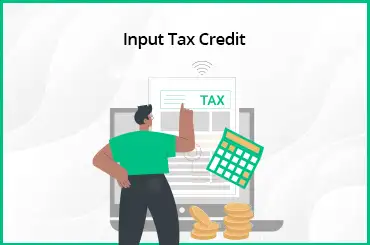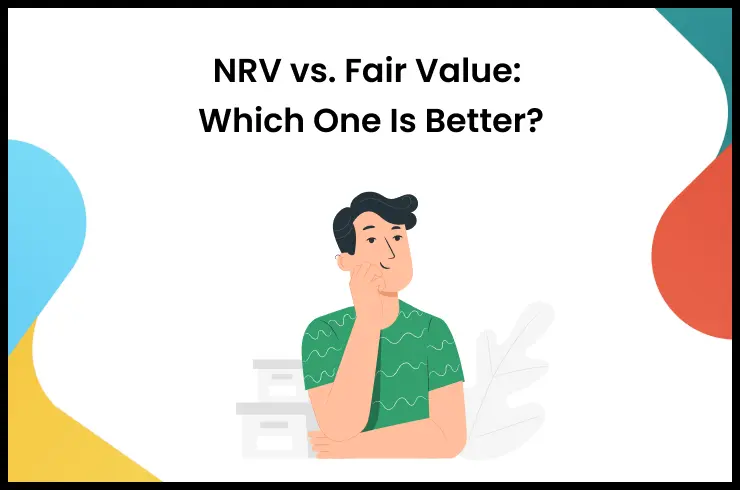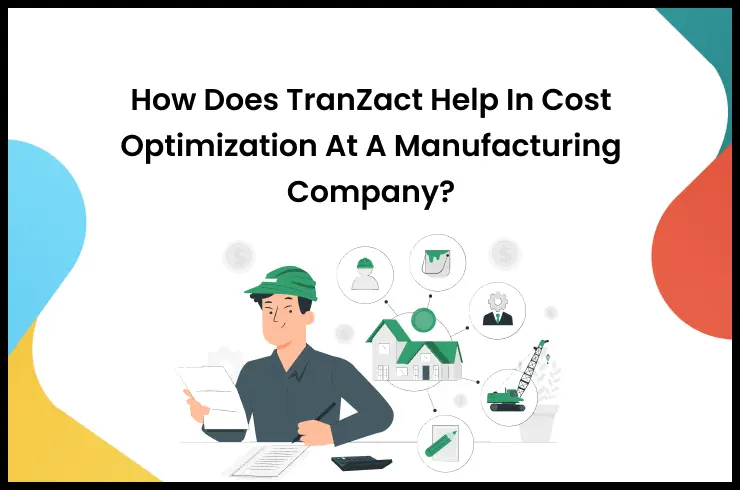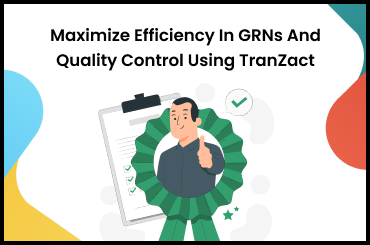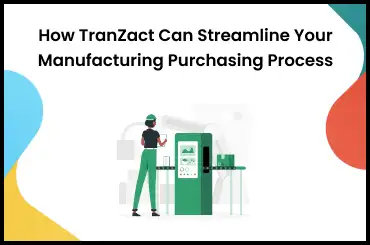The lack of accurate procurement life cycle management and selection of incorrect suppliers may lead to businesses usually facing challenges in managing inventory levels and controlling the supply chain according to market demand. If you are facing the same problem and searching for a solution, you are at the right place.
Managing a procurement cycle traditionally may demand you to hire a professional that may increase the expenses. Automating the process can minimize your workforce and even present accurate details about the ongoing process. But before that, let's understand what is procurement cycle process and how you can use various methods for smartly running your business.
What Is the Procurement Life Cycle?
The procurement life cycle is the end-to-end buying process that involves selecting the vendor and managing the supply chain process. While designing the procurement process, the management aims to reduce unnecessary costs and increase the procurement cycle's speed. The whole operation is divided into various stages to obtain the right supplies at the right time, which are discussed below.
Whether to outsource raw materials, machinery, consulting services, or conduct employee training, companies need external goods and proper planning. The procurement life cycle plays a vital role in managing all the tasks that are involved in the project. This article discusses the procurement cycle, the procurement steps, and ways to manage it.
Procurement Life Cycle Stages
Mainly six procurement life cycle stages are involved in the procurement life cycle followed by various businesses. We have defined all the stages for a better understanding of conducting smooth business operations.
1. Identification of specific business needs
The procurement life cycle starts with the identification of business needs and the opportunities that relay in the market. This is directly connected to the goods and services that can be 'internal' meaning a material required to run the business, and external, meaning the final product ready to sell. It is the initial procurement stage where various departments are involved in setting the budget according to the market need.
2. Making a list of suppliers
After defining the budget, the next step is to shortlist the suppliers who can provide the best quality product or services. It is a vital stage for any business because you have to build a long-term bilateral partnership with the vendor. So, it is a good idea to compare all the options offered in-depth and look for accountability, production capacity, and free-flowing communication with the vendor.
3. Negotiate contract terms with selected suppliers
After choosing the preferred supplier, the next step is to negotiate contract terms with them. The third stage is a very crucial procurement life cycle stage as it helps in reaching a fair price for both parties to get the opportunity to build additional payment features. Before the negotiation, analyze any previous contracts to streamline costs and save money. If your previous agreement was expensive and had unrealistic terms, you can use that knowledge and proceed with the future deal.
4. Finalizing the Purchase Order
Once you submit your contract to the supplier, it's time to start preparing, finalizing, and sending the purchase order. The purchase order is the document that outlines the following details of the product.
- The description of the goods or products.
- The total cost of the goods.
- The quantity you need.
- And the approval of workflow.
After the approval of the purchase order, the financial team is signaled to release the detail to the supplier, including the following information.
- A reference number.
- Payment term agreement.
- And other essential information if required.
All this information is sent to the supplier via email, automating the procurement cycle. This makes the process fast and convenient to use.
5. Invoice receipt and payment process
Once the order is placed, the supplier will receive the invoice stating the agreed price and the payment method. This part of the procurement process can now be done automatically through invoice automation. Depending upon the details of the order, the period of payment is also mentioned.
6. Delivery and audit
The last stage is the delivery of the ordered goods which is executed as soon as the order is ready. This is the procurement life cycle stage, where businesses record the order and double-check the contents. If anything is found missing, the supplier contacts the client and reduces the potential downtime.
Procurement Life Cycle Steps
Though the procurement life cycle consists of six stages, all the processes are carried out in multiple steps that are explained below.
1. Identify Business Needs
The procurement cycle begins with identifying the organization's needs, challenges, and opportunities. It is completely internal that tends to happen at the departmental, executive, and organizational levels. The procurement process aims to create the solution proposed before proceeding forward regardless of where the needs originated. Defining needs also involves determining exactly where the supplies should be offered according to the usage. After identifying the requirements, you have to frame and define them in terms of usage within the organization.
2. Conduct Market Analysis
After you have identified the need of the consumer market, the next step is to conduct a market analysis. This is one of the important procurement life cycle steps as it provides a clear vision of determining the cost if produced in-house or acquired from a third party. And you can do this by analyzing the different vendors available in the market to achieve your goal.
3. Develop a Strategy
Once you have analyzed the market and the vendor, it's time to make the strategy upon your research and leverage the option you have chosen. The process includes the comparison of different vendors by gathering the information using RFP. Here, a Request for Proposal (RFP) is the most common way to compare the vendors and select them using a Request for Quotation (RFQ), depending on your need.
4. Perform Pre-Procurement And Market Tasting
The next step in the procurement life cycle plays a very vital role as it decides the performance of the product before you initiate the procurement cycle. Acquire a small number of your needed supplies to determine the supply chain outage, geopolitical tension, and the influence of competitors. This may help you identify the problems in your plan and even have the opportunity to make changes in procurement strategy.
5. Develop Documentation and Detailed Specification
Now, it's time to dive deeper and analyze your business to develop documentation and detailed specification of the supplied items. It may include the details of the product quality, quantity, and functional specification. It is essential to involve the relevant stakeholder to develop a detailed preference to guide your procurement choice to ensure the good quality of supplies you are buying.
6. RFI Creation and Administration
The next step is to create the request for information (RFI) process in the procurement life cycle to call the suppliers to share information about their businesses and solutions. The business details may include financial information about the company, history, and relevant case studies demonstrating their ability. And the solution details may consist of information regarding product performance, capabilities, and differentiators.
7. Shortlist suppliers and Tender Participation
Now, it's time to shortlist the vendors after reviewing the RFI responses and selecting the suppliers that match your requirement. Keep in mind your future requirements and current needs while creating the shortlist to build a strong and mutual relationship that will become a long-term partnership. Now, you are ready to participate in the tender that you can issue using an invitation to tender (ITT) documentation.
8. Issue Tender
Before participating in the tender, you need to issue the tender using the Request of Quote (RFQ) and ITT. This is helpful for shortlisting the list of suppliers who can solicit bids. Fortunately, if any company forgets to define the shortlist in their procurement life cycle steps, they can insert it in the ITT, which is the open call for suppliers that can meet their needs.
9. Bidding Tender Evaluation and Validation
Now, the shortlisted suppliers will send you their bids which you need to evaluate thoroughly with a transparent analysis of each supplier's bid. Determine each bid and select the offer that is the most beneficial for your organization. The typical goal is to recognize the bid with the greatest value and the quotes that are cleared and structured and reflect the honest assignment of their strength.
10. Award Contracts
After selecting the preferred vendor that fits your needs, draw up the contract laying out the terms by drafting the agreement between you and the suppliers. Be compressive while defining the term because this contract will become the foundation of the relationship with the supplier. The contract includes the key performance matrix, timescale, provision of the wide range of possible disruptions, and obligations of both parties.
11. Warehouse Management and Receipt
Now, it's time to manage the warehouse and logistics for the proper supply chain process. The warehouse management and receipt involve procuring physical goods on a large scale that need to set clear terms for their delivery process. This provision of the procurement life cycle helps businesses to expect deliveries efficiently, with minimum disruption to operations.
12. Vendor Performance Review
The supplier's relationship is dynamic in nature, as both parties need to work together and it may create problems if new vendor terms arise. So, it's very important to conduct regular reviews of the terms and the suppliers to stay on top of any added costs. Identify the pinpoints and adjust the tactics to maintain a high level of performance in the workflow that helps in building a strong relationship with the suppliers.
13. Asset Management
The last step is to conduct asset management for your procurement life cycle, which will help you to track the problems and the need for new technologies and in upgrading them with time. You can also upgrade the terms involved in the procurement cycle while upgrading the equipment and infrastructure and necessitating procurement for new items.
How to Manage Procurement Life Cycle?
Now, you must have understood the procurement cycle and the steps to plan your procurement processes. But managing procurement is not an easy task and requires outsourcing the talents to handle all the steps that require huge capital. If you are unable to invest a huge amount, then you can apply the below method for procurement management.
Automation of administrative tasks
Automating the procurement cycle with procurement management software empowers organizations to run the procurement cycle efficiently and effectively.
- Procurement management software may be on-premise or cloud-based software that allows the users to directly communicate with the stakeholders through chat, comments, and direct emails.
- The software allows the user to automate manual tasks with streamlined workflows and processes.
- It also enables them to quickly assign tasks to team members and stakeholders.
- Conduct paperless operations and even share digital files efficiently with suppliers and the stakeholders.
- This type of software provides the flexibility to pay through multiple payment options.
- Easily manage invoices, purchase orders, and receipt notes in multiple ways.
- Provides high-level security through which you can manage multiple vendors effectively.
Structure the process
The second method is to structure the process by assigning ownership and defining the best practice for your procurement life cycle process. This is achieved by maintaining transparency and providing every stakeholder with access to the data. It also ensures the organization of the procurement process and has the ability to update last-minute changes.
Optimize inventory management
Optimization of inventory management is the most crucial part for any company to seek the correct quantity of supplies at the right time. To manage this process accurately, many companies rely on the cloud-based inventory management system to strike a balance between the inventory capacity and the costs. This type of inventory management system provides real-time visibility that helps the companies to analyze the demand and automatically alert the purchasing staff to replenish inventory on time.
Control Your Procurement Cycles Efficiently
The most optimum procurement life cycle process allows businesses to manage the supply chain process identifying the demand of the market and purchasing the correct supplies. Besides, these processes need to be handled carefully by managing a budget and eliminating unwanted expenses. For this, you will need to hire professionals and build a team which is not possible for many small enterprises. Therefore, cloud-based software designed by TranZact is the ideal option to handle all procurement operations and efficiently connect with vendors. You can also be in touch with suppliers and other teammates with easy tag and comment options and the flexibility to make instant changes to your procurement orders.
FAQs on Procurement Life Cycle
1. What types of businesses use procurement life cycle?
The businesses involved in manufacturing and services use a procurement process to maintain supplies and efficiently fulfill customer demand.
2. Why should businesses follow all the procurement cycle steps?
By following all procurement life cycle steps, businesses can maintain seamless buying operations, survey customer trends easily, avoid inventory shortages, and minimize costs.
3. What are the three main types of procurement life cycle?
Direct, Indirect, and Service Procurement are the three types of procurement cycles mainly used by small and big businesses.







